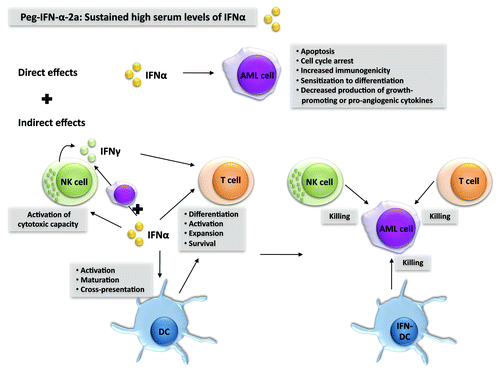Figures & data
Figure 1. Biological rationale behind the use of interferon α to treat acute myeloid leukemia. Interferon α (IFNα) can exert direct as well as indirect anticancer effects against acute myeloid leukemia (AML) cells. Indirect antineoplastic effects stem as IFNα stimulates dendritic cells (DCs), natural killer (NK) cells and T cells to exert antileukemic functions. By using pegylated (peg)-IFNα, sustained high serum levels of IFNα can be achieved, which is probably a prerequisite for the success of such an immunotherapeutic regimen against AML.
